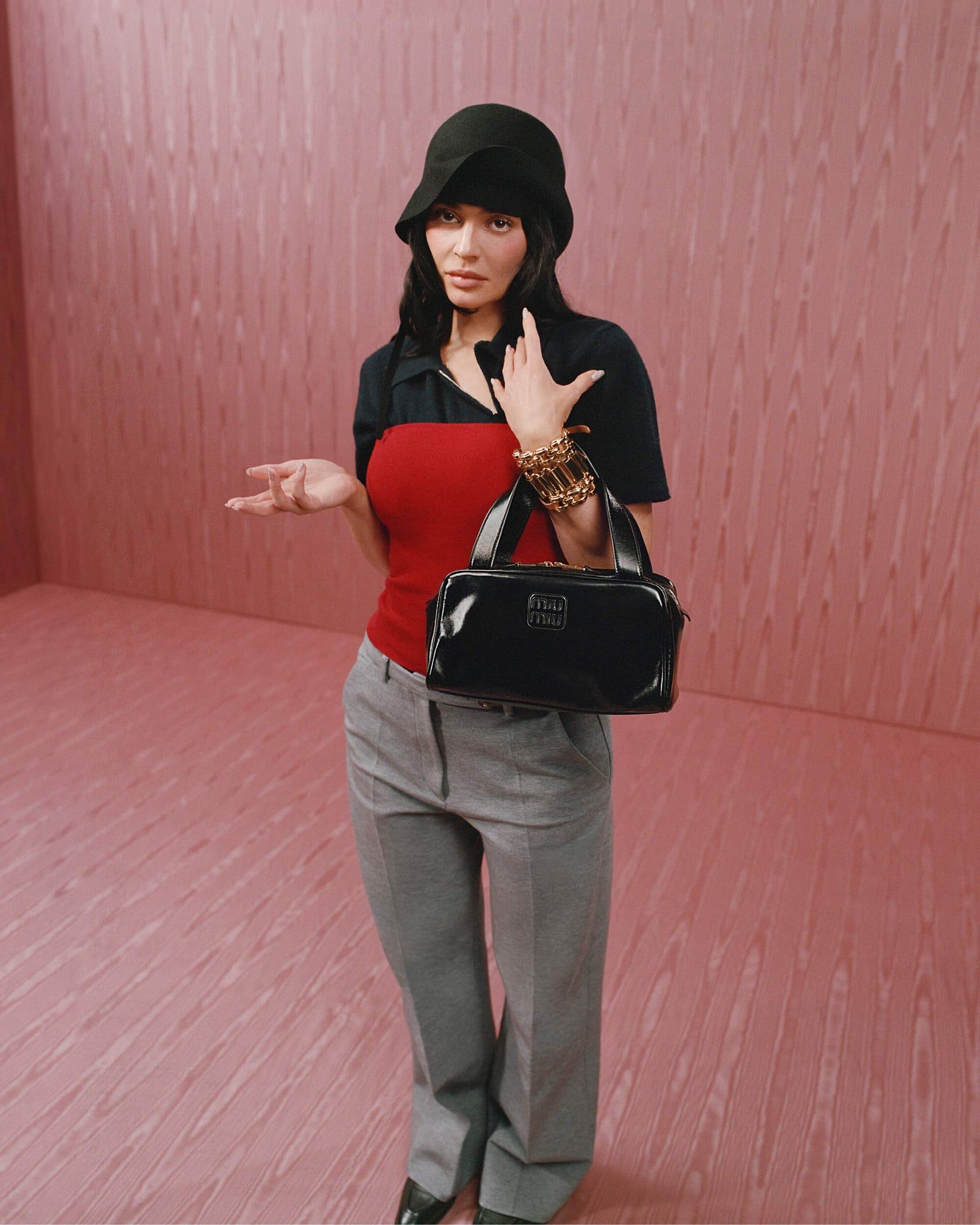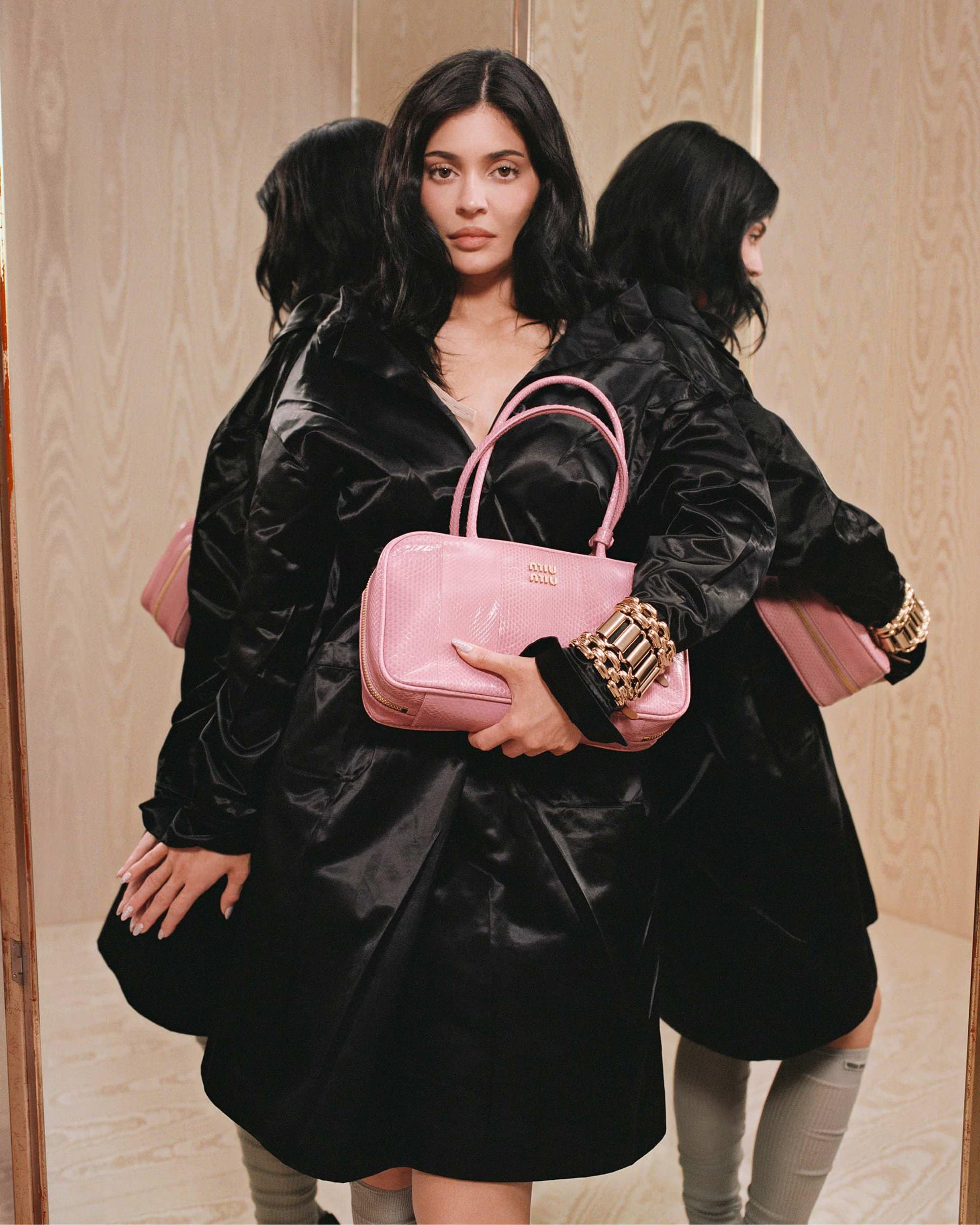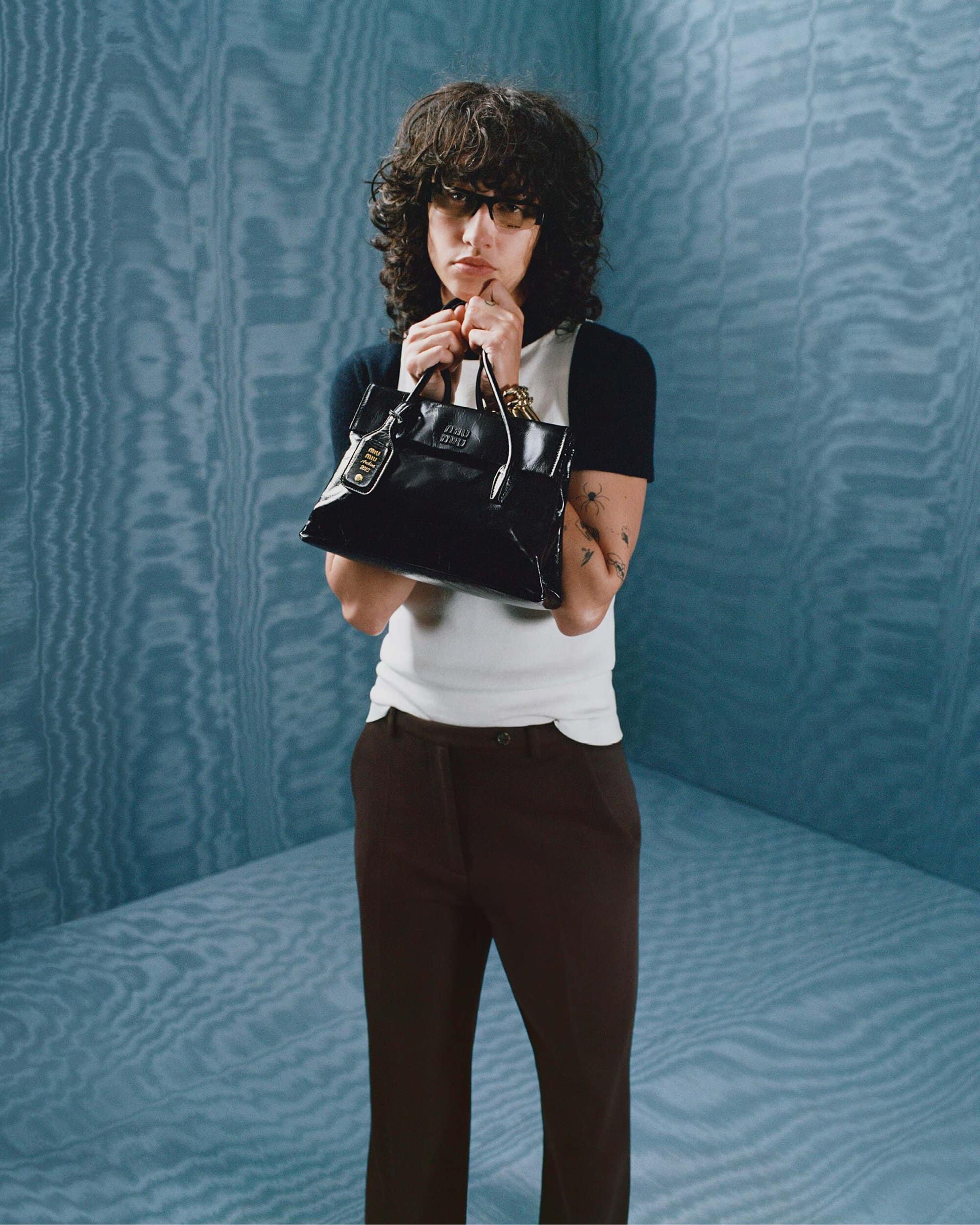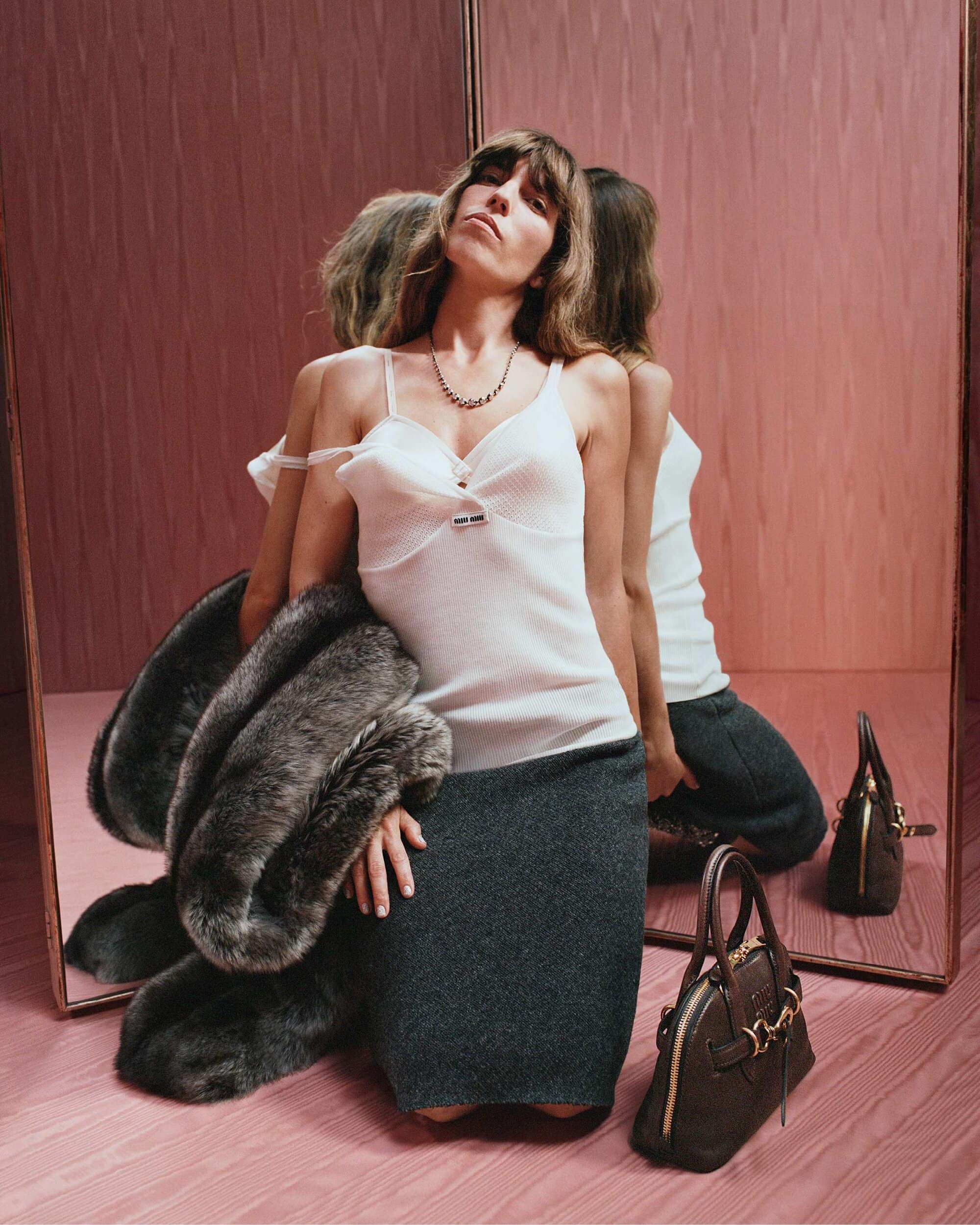What Kylie Jenner’s casting reveals about brand identity, digital backlash, and the cultural currency of belonging.
By Mackenzie Richard Zuckerman
By all accounts, Kylie Jenner’s appearance in Miu Miu’s Fall campaign should have been business as usual: a major influencer fronting a luxury campaign, styled by Lotta Volkova, photographed with stripped-down finesse. It had all the hallmarks of a typical Gen Z-targeted play—recognizable face, moiré-silk set design, minimal distractions, and maximum shareability.
But then came the comments.
What Miu Miu may not have anticipated was how deeply the internet would question whether Kylie “belongs” in the world of Miu Miu—a brand long associated with a kind of offbeat, intellectual femininity. The campaign’s Instagram posts sparked thousands of replies, not about the clothes or even the images themselves, but about identity: Is Kylie a Miu Miu girl? What even is a Miu Miu girl anymore? And perhaps most tellingly: Should she be?
Key Insights
It Wasn’t Strategy—But It Became the Story: Kylie Jenner’s casting may not have been a calculated risk, but the reaction turned it into a powerful commentary on brand alignment, perception, and audience ownership.
Backlash = Buy-In (In This Case): The strong response signals cultural investment, not apathy. Audiences aren’t rejecting Miu Miu—they’re protecting it. That’s not a failure of strategy; it’s proof of resonance.
Influence Must Fit: Celebrity alone isn’t enough. In 2025, casting is editorial. Consumers expect coherence between talent and brand codes—and call it out when the alignment feels off.
Femininity Still Faces a Double Standard: The campaign’s theme—“an exploration of femininity”—made the public scrutiny feel particularly poignant.
Ensemble Logic Matters: Jenner’s styling and presence felt disconnected from the rest of the cast. In an ensemble campaign, balance matters. If one face breaks the visual logic, the campaign can feel fractured.
Social Media Turns Brands Into Platforms: The brand’s own audience hosted the debate—publicly and loudly. In the age of participatory branding, every post becomes a feedback loop. Casting becomes conversation.
It Worked—Just Not As Planned: The campaign succeeded not through universal praise, but through cultural relevance. It sparked a public reckoning around identity, belonging, and what it really means to be a “Miu Miu girl” today.
How Backlash Turned a Campaign Into a Conversation

There’s little to suggest this was a calculated controversy. More likely, Jenner’s casting was a straightforward bid for cultural currency. She’s one of the most followed women in the world, a beauty mogul with undeniable Gen Z appeal, and a magnet for media coverage. But the power of this moment lies not in the campaign’s conception—it lies in its reception.
Because the conversation that followed tells us something bigger: today’s audiences are no longer passive consumers of fashion—they’re cultural co-authors. And they’re not afraid to challenge what they feel doesn’t fit.
When One Face Doesn’t Fit the Frame
The backlash against Jenner’s appearance in the campaign has little to do with her personal style—and everything to do with coherence. Audiences weren’t questioning her fame or influence. They were questioning the fit.
Jenner’s aesthetic doesn’t naturally align with the house’s codes of subversive youth, intellectual playfulness, or awkward-chic femininity. And the styling only amplified that mismatch. In comments across social platforms, viewers noted that Jenner looked uncomfortable in the brand’s silhouettes—less embodied, more imposed upon.
In a campaign featuring an ensemble cast of multidisciplinary women—artists, actors, and musicians whose personas map closely onto Miu Miu’s cultivated eccentricity—Jenner stood apart. Not as a disruption, but as a dissonance.
From a strategic standpoint, her influence might have landed more cleanly in a solo accessory campaign, where the look could flex toward her personal brand. In a group context, however, that creative dissonance becomes harder to justify. Instead of diversity, the campaign risks reading as hierarchy.
The lesson: casting must serve the story, not supersede it.
The Comment Section as Focus Group
Luxury once relied on celebrity casting as a shorthand for influence. But today, influence is contextual. Consumers want coherence. They want brands that stand for something—and faces that reinforce that something.
When that alignment falters, the public responds. Loudly. On the brand’s own platform.
Miu Miu’s comment section became a kind of cultural audit. One where fans didn’t just critique the visuals—they interrogated the values behind them. In many cases, the concern wasn’t that Jenner looked “bad.” It was that she didn’t look Miu Miu.
And that distinction is everything. It’s not just about aesthetics. It’s about perceived integrity.
The Gendered Politics of Being Seen
It’s also worth pointing out that the official campaign caption described the series as “an exploration of femininity.” Which makes the backlash all the more revealing.
Because what is more quintessentially feminine than being endlessly scrutinized?
There’s something uncomfortably familiar in the way the public rushed to question whether Kylie “deserves” to represent Miu Miu. The comments echo a cultural reflex as old as tabloid culture: the compulsion to dissect, debate, and sometimes discredit the presence of women in public space. It feels like a page torn from the 2000s—when a woman gaining ten pounds could spark global headlines, and celebrities were constantly measured against shifting, often contradictory ideals.
It raises an important question about the nature of public perception and the standards women still face in the media. The intense scrutiny directed at Jenner’s fit within the Miu Miu narrative isn’t just about fashion; it’s about who gets to belong and who gets to define that belonging. It suggests that when a woman is placed at the center of a campaign, she becomes a canvas for collective opinion—a phenomenon that feels uniquely tied to the experience of femininity in the public eye.
In this sense, the debate isn’t merely about Kylie or Miu Miu—it’s about the broader cultural landscape in which women’s identities are constantly negotiated and contested. It speaks to a reality where women, especially those in the public eye, are often subject to a level of scrutiny that extends beyond their professional roles and into their very personhood.



Who Gets to Be the Miu Miu Girl?
The campaign assembled what the brand called “a powerful, multi-disciplinary cast united in its strength of character.” From singer Towa Bird to actress Myha’la to artist Yura Romaniuk, each figure embodied a strand of contemporary femininity: layered, lived-in, and at times contradictory.
Jenner’s inclusion was meant to be part of that spectrum—but the public reaction revealed how contested those boundaries still are.
To define a “Miu Miu girl” in 2025 is to engage with a broader conversation around beauty, complexity, and cultural permission. Who gets to represent modern femininity? What does belonging look like in a brand that trades on nuance and intellect? And who decides when someone fits?
These are questions Miu Miu may now be forced to answer—whether it intended to or not.
Brand Identity Isn’t Claimed—It’s Debated
Here’s the twist: the campaign, in retrospect, is working. Not because it was universally loved, but because it sparked real dialogue. In the best-case scenario, it gives the brand room to quietly clarify its voice, reaffirm its direction, and reframe its approach with intention.
This moment shows us that brand identity isn’t what you say—it’s what people say about you. And in the age of participatory branding, belonging isn’t just assigned. It’s earned.
If Miu Miu listens carefully, this backlash could mark the beginning of a more sophisticated strategy—one that uses controversy not as a gimmick, but as a tool for refinement. Because when the world cares enough to debate who you are?
That’s when you know you still matter.
